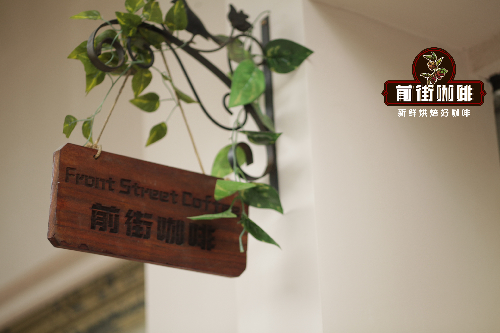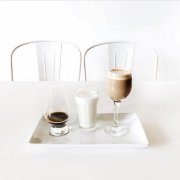How to make coffee flowers? How to choose the flower jar that is most suitable for making milk foam and flower drawing?

Professional coffee knowledge exchange more coffee bean information please follow the coffee workshop (Wechat official account cafe_style)
Focus on the discussion: is the coffee flower really that important?
Milk steaming and flower drawing are two basic skills of any barista. It's not easy to master, especially when you start for the first time, but I have good news for you: choosing the right milk can can be of great help.
There are many different milk cans on the market. They vary in color, design, size, shape, nozzle type, weight, etc., and they are designed and distributed by different brands around the world.
So, when faced with so many choices, how do you know which milk can is the best? Well, it depends on your needs.
Spanish version: C ó moSeleccionar la Mejor Jarra de Leche para Hacer Arte Latte y Vaporizar
Milk can barista steams milk. Credit: Sam Koh
Basic requirements
Let's start with the most basic thing to pay attention to when choosing a milk pot: width.
First of all, you need a kettle wide enough to produce a "whirlpool" effect when you steam milk. This whirlpool will break your bigger bubbles and create microbubbles.
What is a microbubble? When milk is inflated and evenly heated, it produces micro-foam, resulting in soft, smooth, silky and glossy milk. This milk not only tastes good, but also has the best texture for free-pouring flower-drawing design.
The milk can is poured with milk to pull flowers. Credit: Sam Koh
Size
Most milk pots come in one of two sizes, 12 ounces and 20 ounces. But if your coffee bar needs them, you can find smaller or bigger pitchers. In general, 12-ounce and 20-ounce pots should have similar base sizes, so width should not be included in this choice.
When choosing the size of a milk pot, the most important factor you need to consider is how much milk you need for your drink. When it comes to milk cooking and blistering, you don't want your pitcher to be too full of space. If it goes into space, you will not be able to fully aerate the tip of your steam stick into the milk. If it is too full, the milk will spill when you steam.
The ideal amount of milk would sit at the bottom of the vent, about 1/3 of the pot.
A small pitcher used for chocolate.
Materials
You want a pitcher made of high-quality stainless steel because it keeps the temperature consistent when you steam milk. In other words, when you steam the milk to about 160 °F / 70 °C, the milk kettle is heated with the milk. If you are not comfortable with the heat of a stainless steel pitcher, you can always look for products with Teflon coating to protect your fingers and hands.
Milk can baristas pull flowers from teflon-coated milk cans.
Mouth
While experienced baristas and professionals may stir flawless flowers with any milk jug, some designs make it easier to use certain nozzle shapes to dump freely. This makes these pots easier to learn and coach-and compete with them.
Heart and tulips are the places where most people start their flower-pulling journey. But simplify this and you will pour spots: bubbles flow out smoothly and are more or less round. When you just start and feel things, the best pitcher to make these spots will be the classic pitcher. They allow foam to flow evenly in a relatively smooth shape.
Milk can fillet (left) vs sharp mouth (right). Credit: Sam Koh
It will be difficult for Rosettas to use these wide vents, but Slowsetta (fewer and thicker leaves) is an option. They also apply to waves!
On the other hand, traditional Rosetas and exquisite flowers (such as swans and peacocks) are suitable for narrower, sharper vents. This gives you more detailed control over the design.
There are many classic style pitchers who can handle all kinds of bets, such as Incasa or Joe Frex. If you want to work on a round flatness, Motta's pitcher will provide a more curved spout for your heart and tulip layer. Barista Gear pitchers provide thinner and sharper vents for complex flower-drawn products.
Swan pull flower: this will be the easiest to pour a thin, pointed vent.
See also: how to choose the best milk for coffee foam and flowers
Handle or no handle?
Whether you want a handle or not depends on how you want to hold the pitcher when you dump. Some people find that unhandled pitchers give them more flexibility when pouring. It can also better grasp the top of the pitcher, providing you with more control and accurate nozzles.
On the other hand, you need to remember that you are steaming milk to a fairly high temperature. If you are looking for a pitcher without a handle, I suggest getting an insulated package.
A barista poured the flower from the pot with a handle.
We have introduced many key points in this article, but the most important thing when choosing a milk pot is whether you are satisfied with it or not. It must provide you with proper weight, balance and calorie control. You should also pay attention to how much control you have when pouring. How you hold the pitcher, when you need to use more pressure and gradually reduce-these should be taken into account.
What works for one barista may not work for the next barista, so try a different pitcher, find your favorite, and hone your skills. Getting the right milk cans is one of the ways to improve the skills of milk steaming, flower drawing and overall baristas.
Written by Sam Koh.
Analysis of the steps of coffee flower drawing how to avoid the pattern deviation? Tips for flower drawing
Important Notice :
前街咖啡 FrontStreet Coffee has moved to new addredd:
FrontStreet Coffee Address: 315,Donghua East Road,GuangZhou
Tel:020 38364473
- Prev

How to make milk foam? What is the appropriate temperature for the milk? Taste and flavor characteristics of cappuccino
Professional coffee knowledge exchange more coffee bean information please follow the coffee workshop (Wechat official account cafe_style) hit the milk bubble to get the best milk foam operation guide, why does the milk bubble? When milk is warmed and foamed by a machine called a steam engine, it is called foaming. High-quality coffee, when matched with milk, can make people feel the sweetness of coffee itself.
- Next

How to choose milk and foam suitable for flower pulling? How long does it take to learn the simplest pattern of coffee flowers?
Professional coffee knowledge exchange more coffee bean information please follow the coffee workshop (Wechat official account cafe_style) key discussion: is coffee flower really that important? The foam at the top of the flawless cappuccino doesn't happen by accident. The color layer in the freshly poured latte is also different. They are there for two things: the skill of baristas and the quality of the milk they use. Low
Related
- What is the meaning of lactic acid fermentation with coffee bean treatment?
- How to judge the state of foam by sound?
- How does the latte pull out the unicorn pattern? Come to get for a little trick to improve the flower pull!
- Will flower pulling affect the taste of the latte?
- Do you know the history of coffee?
- The difference between honey treatment and sun washing what is raisin honey treatment?
- What kind of milk can a novice use to make coffee foam to keep the foam longer? The correct method and skills of milking tutorial sharing
- Why do washed coffee beans taste sour? Flavor characteristics of washed Coffee
- Introduction to the skill of how to practice the size and height of water injection around the circle of hand-brewed coffee
- How do beginners practice coffee flower drawing from scratch?

